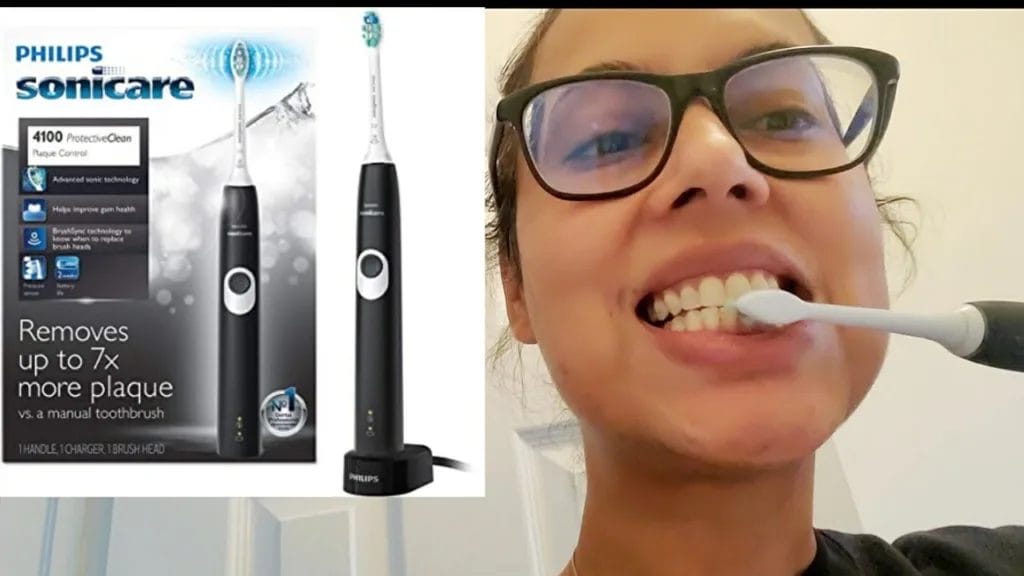When it comes to Phillips, they are never short of a quality toothbrush. The entire Sonicare series is full of products that tend to various needs of the customers. They are ADA (American Dental Association) approved as well! So, you are always sure that you’re getting a quality product.
There are so many choices in this series to make peoples’ heads spin. Each one with its unique set of benefits and perks that sets it apart. One is never at a loss with a product.
This is the only way to be nitpicky about things and select one out of the lot. That’s the entire motif of this Phillips Sonicare 4100 vs 5100 vs 6100 face-off.

Similarities
- Both use Sonicare technology that pulses water between teeth to remove plaque. This is more effective than a manual toothbrush for plaque removal.
- They have pressure sensors that alert you if you’re brushing too hard. This helps prevent gum recession.
- Two intensity settings allow you to adjust the power for a comfortable clean.
- Two-minute timers with 30-second quadrant alerts ensure you brush for the dentist-recommended time.
Differences
- The 5100 is more expensive, typically costing about $50-60 compared to $30-40 for the 4100.
- The 5100 has three cleaning modes (Clean, White, Gum Care) whereas the 4100 only has normal and sensitive modes. The additional modes on the 5100 tailor the brush head motion and timing for specific needs.
- The 5100 comes with a travel case. The 4100 does not.
- The 5100 has “BrushSync” technology that notifies you when it’s time to replace the brush head for optimal effectiveness. The 4100 has a brush head replacement reminder but doesn’t automatically detect a new brush head.
- The 5100 is slightly quieter during operation.
- The 5100 has a battery life of up to 2 weeks while the 4100 lasts around 10 days on a full charge.

What I Liked about Philips Sonicare ProtectiveClean 4100
Effective plaque removal
It uses Sonicare technology that pulses water between teeth to remove up to 7 times more plaque than a manual toothbrush. This leads to noticeably cleaner teeth.
Protects gums
It has a pressure sensor that alerts you if you’re brushing too hard. This helps prevent gum recession over time.
Easy to use
With just 2 intensity settings, a quad pacer, and a 2-minute timer, it’s simple to get an effective clean. The angled neck and slim handle make maneuvering easy.
Battery life
Lasts up to 2 weeks on a full charge. The low battery indicator light lets you know when it needs recharging.

Affordable price
Typically costs $30-40 which is budget-friendly compared to more advanced Sonicare models, while still packing core features and performance.
Approachable design
It has a familiar manual-brush-shaped head and slim profile that isn’t too techy or intimidating. Makes a gentle transition from manual to electric brushing.
What I Liked about Philips Sonicare ProtectiveClean 5100
Effective cleaning
It uses Sonicare technology that pulses water between teeth to remove plaque. This provides superior cleaning ability compared to a manual toothbrush.

Customizable modes
It has 3 modes (Clean, White, Gum Care) to tailor the brushing experience to your needs. For example, the Gum Care mode is gentler for massaging gums.
Pressure sensor
It pulses gently to alert you if you’re brushing too hard, helping to prevent gum recession.
Approachable design
The brush has a familiar manual-toothbrush shape and slim profile, making it unintimidating to use.
Battery life
Lasts up to 2 weeks on a full charge. The low battery light gives you plenty of warning to recharge.

- Gujarat Police Logo - January 25, 2024
- CSC Logo - January 25, 2024
- Lata Shabd Roop - January 25, 2024




